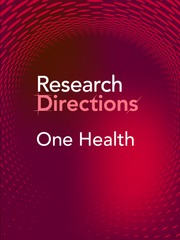No CrossRef data available.
Article contents
Expectations of wildlife health surveillance systems and implications for system design
Published online by Cambridge University Press: 13 March 2025
Abstract
Wildlife health surveillance is a rapidly evolving field. The goal of this commentary is to share the authors perspectives on the evolving expectations of wildlife health surveillance. We describe the basis for developing our opinions using multiple information sources including a narrative literature review, convenience samples of websites and conversations with experts. With increasing prominence of wildlife health, expectations for surveillance have increased. Situational awareness, and threat or vulnerability detection were expected outputs. Action expectation themes included knowledge mobilization, reliable action thresholds and evidence-based decision making. Information expectations were broad and included the need for information on social and ecological risk drivers and impacts, and evaluation of surveillance systems. Surveillance systems developers should consider: (1) What methods can equivalently and reliably manage the biases, uncertainties and ambiguities of wildlife health information; (2) How surveillance and intelligence systems support acceptable, ethical, efficient and effective actions that do not generate unintended consequences; and (3) How to generate evidence to show that surveillance and intelligence systems lead to decisions affecting vulnerability or resilience to endemic health threats, emerging diseases, climate change and other conservation threats.
- Type
- Impact Paper
- Information
- Creative Commons
- This is an Open Access article, distributed under the terms of the Creative Commons Attribution-NonCommercial-NoDerivatives licence (http://creativecommons.org/licenses/by-nc-nd/4.0/), which permits non-commercial re-use, distribution, and reproduction in any medium, provided the original work is unaltered and is properly cited. The written permission of Cambridge University Press must be obtained for commercial re-use or in order to create a derivative work.
- Copyright
- © The Author(s), 2025. Published by Cambridge University Press



